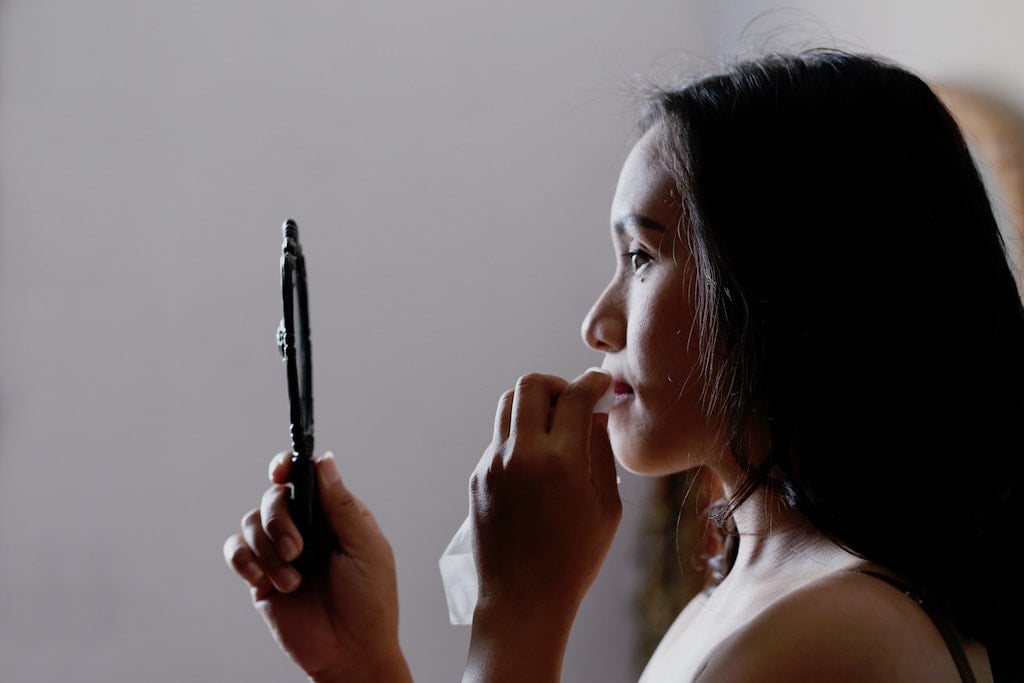By Meghan O'Neal
06/16/2020

Healing a piercing can be quite stressful, especially if you tend to be a bit of a hypochondriac. The problem is that many of the symptoms of healthy healing are similar to symptoms of larger issues. This leads to a lot of confusion, especially in the first few weeks of healing.
To help ease some of your fears, we’ve put together a list of frequently asked questions around healing a piercing and their answers.
Please remember that, if you have any doubts surrounding the health of your piercing, you should speak to a professional before things get out of hand.
The tricky part about healing a piercing is that everyone heals differently; there’s no exact timeframe that you can count on. If you’re one to heal slowly, you might be doubtful as to whether your piercing is healing at all.
However, there are some sure signs that your piercing has begun to heal. It’s common for piercings to swell in the hours post-piercing. This is a result of your body rushing white blood cells to the area to kill any bacteria that may have entered the piercing. It’s not uncommon for that swelling to remain for a few days. Once the swelling starts to go down, you can be sure that your piercing is beginning its first stages of healing.
If the swelling hasn’t started to go down in about a week, then you should probably contact your piercer to make sure that your piercing is still healing smoothly. Some swelling takes a while to recede, but it can also be a sign of a complication.

Another sign of healing is a secretion of clear liquid from your new piercing. This is called lymph fluid, and it’s part of your body’s defense system. Lymph fluid consists of mostly white blood cells, and it’s your body’s frontline against infection. You’ll likely see some of this discharge throughout most of the healing process, so get used to it (and celebrate the fact that it’s a sign that your body is doing its job).
If the secretion is excessive or colorful, talk to a medical professional, since it could be a sign of a larger issue.
Identifying a fully healed piercing is harder that you might think. The fistula (piercing tunnel) takes longer to heal than the outside of the piercing, so it could appear healed weeks before it actually is. The best way to determine whether your piercing is healed is to have a piercer look at it.
If you’re in a position where you can’t have a piercer take a look, for whatever reason, there are some ways that you can tell for yourself if your piercing has healed. (Don’t just rely on healing timelines; they are different for everyone, and some people experience vastly longer healing times than others.)
If your piercing has stopped secreting clear liquid, the jewelry can move more freely than before, and the area around the piercing holes is smooth and free from discoloration, then these are good signs that your piercing has healed. However, it’s not guaranteed, especially if only one or two of these signs are true. Your best bet is to see a piercer.
Everyone’s body heals differently, and unfortunately, there’s not really any way to make your piercing heal faster. However, you can take some precautions to ensure that your piercing doesn’t heal slower.

The best thing that you can do for your piercing is to keep it clean and safe in order to enjoy the shortest healing times possible. But, even if you do everything right, know that you might still experience a long healing period, depending on your body’s ability to heal itself.
Short answer: a resounding, “No!”
Not long ago, it was common practice to twist the jewelry as part of piercing aftercare. This was because it was believed that twisting the jewelry prevented the skin to heal onto the jewelry. Since then, we’ve learned that this theory was untrue and that, in fact, twisting the jewelry can cause damage to the delicate, healing skin.
The best practice during healing is to leave the jewelry completely alone and touch your piercing as little as possible.
As a result of the clear liquid that we talked about earlier, crusties tend to form around the piercing. These can get itchy and uncomfortable, and they don’t look the prettiest.
Your first instinct will probably be to pick them away. However, picking at them could irritate the skin and cause further complications.
The crusties should come off on their own. However, if they become too bothersome, you can soak them away with warm, purified water, and gently wipe them away with a clean paper towel.
It happens to the best of us. You have a busy day, you get home, put on your pajamas, and fall straight into bed. When you wake up the next morning, you remember, with a jolt, that you completely forgot to clean your piercing the day before. What’s going to happen!?

First of all, just breathe. If you’ve been diligent in your aftercare practices until now, then one missed day won’t spell the end of your piercing. Infections occur due to habitual bad hygiene rather than a missed cleaning or two.
That doesn’t mean, however, that you should become complacent. Do your best to adhere to a cleaning schedule (many choose to conduct a cleaning before or after every meal to ensure that they’re cleaning three times a day).
For those of us who tend to worry, healing a piercing can be a stressful experience. The important thing to remember is that, although complications can happen, things like piercing infections are quite rare as long as you follow your piercer’s aftercare instructions. All you need to do is keep your piercing clean, understand the signs of healing, and refrain from touching the jewelry, and your piercing will be just fine.
The hardest part about healing a new piercing is having to wait until you can try out super cute jewelry styles. To help your wait go faster, here are some of our favorites that you can dream about.
Leave A Comment